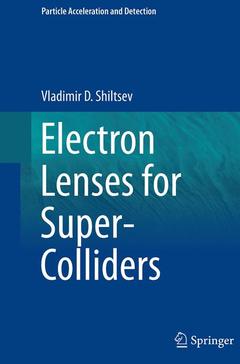Electron Lenses for Super-Colliders, Softcover reprint of the original 1st ed. 2016 Particle Acceleration and Detection Series
Auteur : Shiltsev Vladimir D.

Offers a unique overview of the principles of electron lens systems and their application in supercolliders
Written by a pioneer in the practical use of electron lenses in supercolliders
Includes a review of the complex beam dynamics issues arising in high energy particle accelerators
Treats theoretical principles, practical applications and design considerations
Describes practical experience and issues arising in the implementation of electron lens technology in hadron colliders
Date de parution : 08-2016
Ouvrage de 188 p.
15.5x23.5 cm
Date de parution : 11-2015
Ouvrage de 188 p.
15.5x23.5 cm
Thème d’Electron Lenses for Super-Colliders :
Mots-clés :
Application of Electronic Lenses; Beam Dynamics in Supercolliders; Beam Halo Collimation; Beam-beam Compensation; Electron Beam Stability; Electron Lenses in Large Hadron Colliders; Electron Lenses in Particle Accelerators; Electron Lenses in Supercolliders; Longitudinal Beam Collimation; Physics of Electron Lenses; Proton Beam Stability; Space-charge Compensation; Tevatron Electron Lenses
